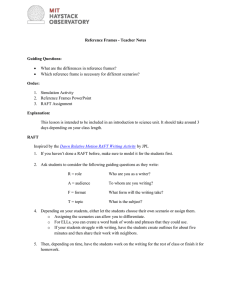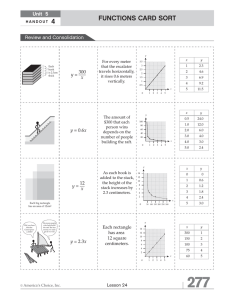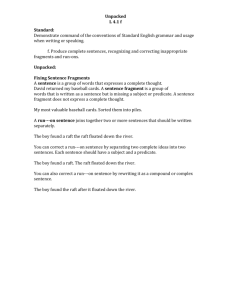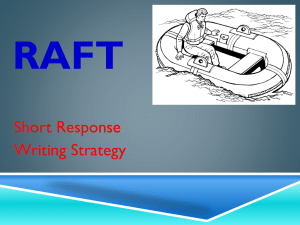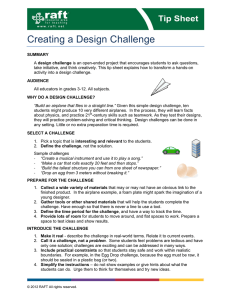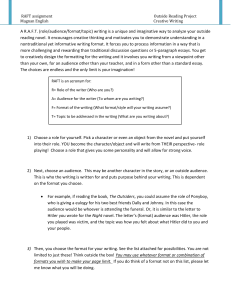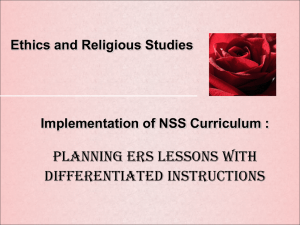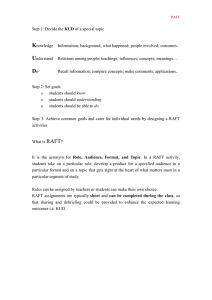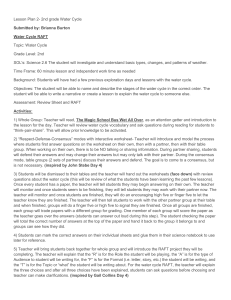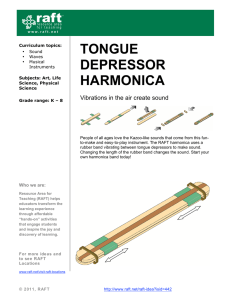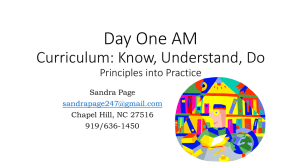RAFT
advertisement
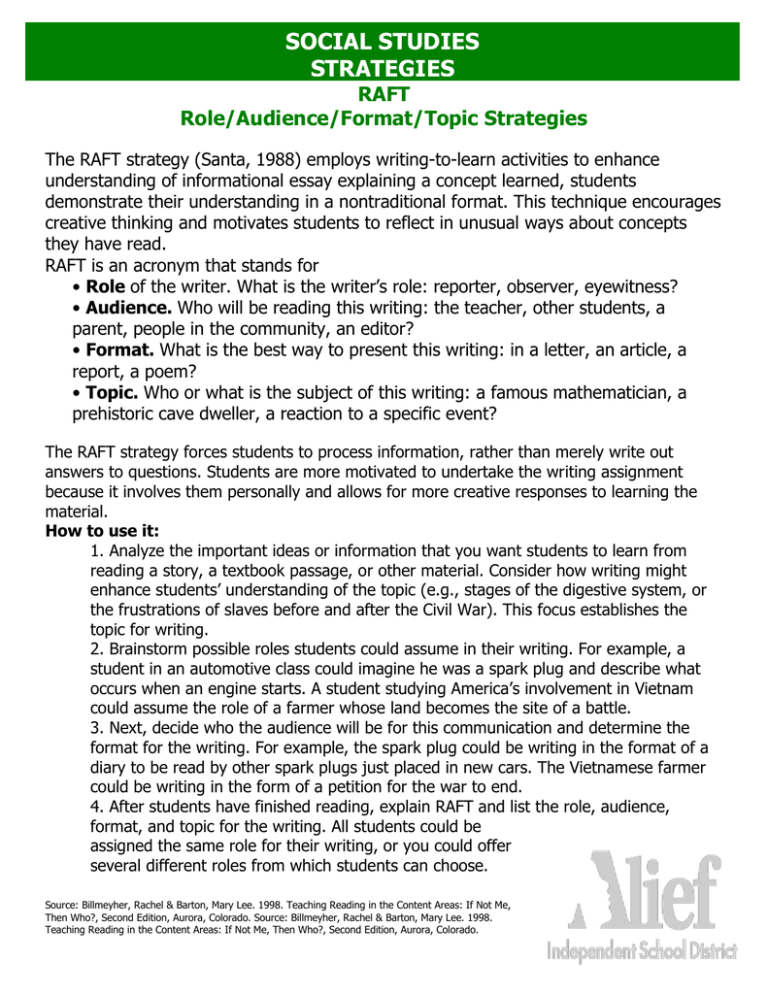
SOCIAL STUDIES STRATEGIES RAFT Role/Audience/Format/Topic Strategies The RAFT strategy (Santa, 1988) employs writing-to-learn activities to enhance understanding of informational essay explaining a concept learned, students demonstrate their understanding in a nontraditional format. This technique encourages creative thinking and motivates students to reflect in unusual ways about concepts they have read. RAFT is an acronym that stands for • Role of the writer. What is the writer’s role: reporter, observer, eyewitness? • Audience. Who will be reading this writing: the teacher, other students, a parent, people in the community, an editor? • Format. What is the best way to present this writing: in a letter, an article, a report, a poem? • Topic. Who or what is the subject of this writing: a famous mathematician, a prehistoric cave dweller, a reaction to a specific event? The RAFT strategy forces students to process information, rather than merely write out answers to questions. Students are more motivated to undertake the writing assignment because it involves them personally and allows for more creative responses to learning the material. How to use it: 1. Analyze the important ideas or information that you want students to learn from reading a story, a textbook passage, or other material. Consider how writing might enhance students’ understanding of the topic (e.g., stages of the digestive system, or the frustrations of slaves before and after the Civil War). This focus establishes the topic for writing. 2. Brainstorm possible roles students could assume in their writing. For example, a student in an automotive class could imagine he was a spark plug and describe what occurs when an engine starts. A student studying America’s involvement in Vietnam could assume the role of a farmer whose land becomes the site of a battle. 3. Next, decide who the audience will be for this communication and determine the format for the writing. For example, the spark plug could be writing in the format of a diary to be read by other spark plugs just placed in new cars. The Vietnamese farmer could be writing in the form of a petition for the war to end. 4. After students have finished reading, explain RAFT and list the role, audience, format, and topic for the writing. All students could be assigned the same role for their writing, or you could offer several different roles from which students can choose. Source: Billmeyher, Rachel & Barton, Mary Lee. 1998. Teaching Reading in the Content Areas: If Not Me, Then Who?, Second Edition, Aurora, Colorado. Source: Billmeyher, Rachel & Barton, Mary Lee. 1998. Teaching Reading in the Content Areas: If Not Me, Then Who?, Second Edition, Aurora, Colorado. SOCIAL STUDIES STRATEGIES Examples of RAFT Assignments Role Audience Format Topic Newspaper Reporter Readers in the 1870s Obituary Qualities of General Custer Lawyer U. S. Supreme Court Appeal Speech Dred Scott Decision Abraham Lincoln Dear Abby Advice Column Problems with his generals Mike Royko Public News Column Capital punishment Frontier Woman Self Diary Hardships in the West Constituent U. S. Senator Letter Gun Control Newswriter Public News Release Ozone layer has been formed Chemist Chemical company Instructions Combinations to avoid Wheat Thin Other Wheat Thins Travel Guide Journey through the digestive system Plant Sun Thank-you note Sun’s role in plant’s growth Scientist Charles Darwin Letter Refute a point in evolution theory Square Root Whole Number Love Letter Explain relationship Repeating Decimal Set of Rational Numbers Petition Prove you belong to this set Cook Other Cooks Recipe Alcoholism Julia Child TV Audience Script Wonders of eggs Advertiser TV Audience Public Service Importance of fruit Lungs Cigarettes Complaint Effects of smoking Huck Finn Jim Letter What I learned during the trip Joseph Stalin George Orwell Letter Reactions to Animal Farm th Comma 9 grade students Complaint How it is misused Trout Self Diary Effects of acid rain on lake DOWNLOADABLE RAFT FORM Note: From Classroom strategies for interactive learning, by Doug Buehl, 1995, Schofield, WI: Wisconsin State Reading Association. Copyright © 1995 by the Wisconsin State Reading Association. Reprinted with permission.
